The Mother of Dragons Soars: Comet 12P/Pons-Brooks Graces the Northern Hemisphere [Night Sky Beobachtung, Comet Observing, Naked Eye Comet]
Fire and Ice Collide! This isn’t a fantasy novel, but a real-life celestial spectacle unfolding right now. The aptly nicknamed “Mother of Dragons” comet, officially known as Comet 12P/Pons-Brooks, has arrived in the night skies of the Northern Hemisphere, much to the delight of skywatchers and astronomy enthusiasts alike.
This rare visitor, with its potential fiery tail and icy core, offers a unique opportunity for both seasoned astronomers and curious newcomers to witness a cosmic marvel. But how did this comet get its fiery moniker, and how can you catch a glimpse of it yourself?
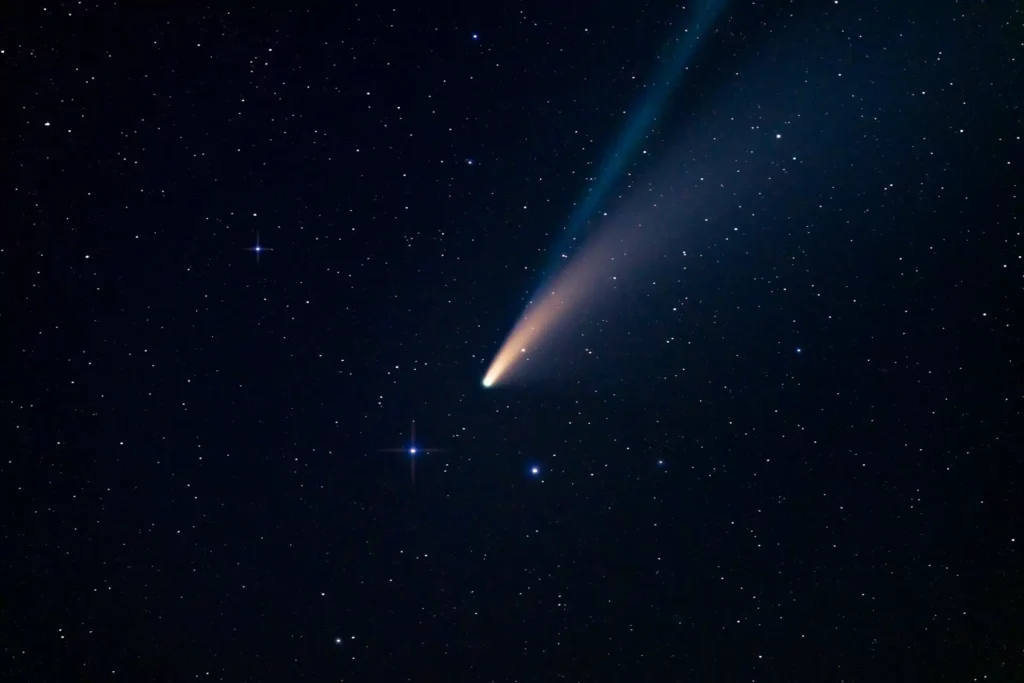
Table of Contents
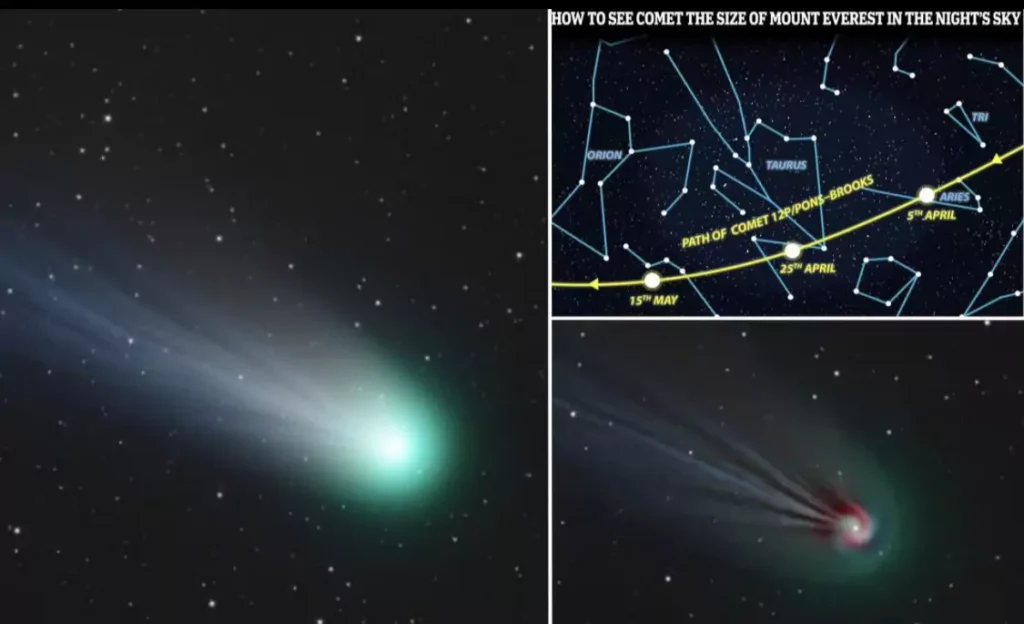
A Comet Fit for a Khaleesi: Unveiling the Mother of Dragons’ Secrets [Comet 12P/Pons-Brooks history, Comet Nicknames, Halley-type comet]
Comet 12P/Pons-Brooks boasts a rich history, journeying through the vast expanse of space for millennia. Classified as a “Halley-type” comet, it takes a leisurely 71 years to complete a single orbit around the Sun. This means that the last time skywatchers on Earth had the chance to witness its presence was in 1954!
The fiery nickname, however, has a more recent origin. In July 2023, the comet experienced a dramatic cryovolcanic eruption, spewing forth gas and dust at an unprecedented rate. This outburst, along with the temporary formation of horn-like structures around its nucleus, led astronomers to dub it the “devil comet.”
But for fans of the popular fantasy series “Game of Thrones,” the fiery outburst and horns held a different connotation. The resemblance to Daenerys Targaryen’s fire-breathing dragons was too strong to ignore, and the “Mother of Dragons” nickname quickly took root in popular culture.
A Celestial Dance: When and Where to See the Mother of Dragons [Comet Visibility, Northern Hemisphere Constellations, Observing Tips]
Unfortunately, the window to witness the Mother of Dragons isn’t open indefinitely. Its prime viewing window for the Northern Hemisphere fell in late March and early April 2024. However, there might still be a chance to catch a glimpse, depending on your location and the comet’s current activity level.
Here’s what you need to know
- Timing is Key: Look for the comet low on the western horizon roughly an hour after sunset.
- Favorable Conditions: Clear, dark skies with minimal light pollution are essential for spotting the comet.
- Naked Eye or Binoculars?: While it may be visible to the naked eye under ideal conditions, binoculars will significantly enhance your chances of seeing the comet’s faint glow and potential tail.
- Know Your Constellations: The comet’s exact location in the night sky will change throughout the month. Consulting star charts or astronomy apps can help you pinpoint its position relative to nearby constellations.
Remember, even with the best preparation, comet visibility can be unpredictable. Don’t get discouraged if you don’t see it on your first try! Keep checking the skies throughout the remaining viewing window and you might just be rewarded with a glimpse of this celestial visitor.
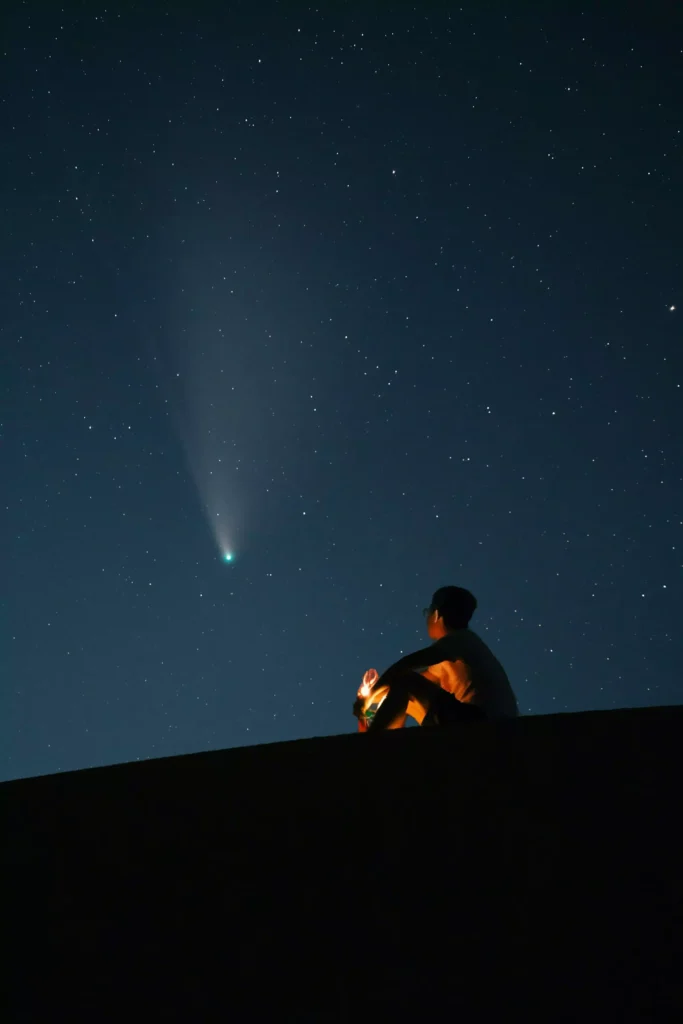
A Dragon’s Legacy: Unveiling the Mysteries of Comet 12P/Pons-Brooks [Comet Composition, Cryovolcanism, Scientific Significance]
Beyond its captivating appearance, the Mother of Dragons holds significant scientific value. Studying comets like 12P/Pons-Brooks allows astronomers to unlock the secrets of our solar system’s formation and evolution.
Here’s a deeper look at the science behind the spectacle
- Icy Composition: Comets are essentially giant dirty snowballs, composed primarily of ice, dust, and rocky material. As they approach the Sun, the ice sublimates (transforms directly from solid to gas), creating a glowing coma and a flowing tail.
- Cryovolcanic Activity: The recent eruption of 12P/Pons-Brooks highlights the fascinating phenomenon of cryovolcanism. Unlike their terrestrial counterparts that spew molten rock, cryovolcanoes erupt with icy materials like water vapor, methane, and ammonia.
- A Celestial Time Capsule: Comets are considered pristine remnants of the early solar system. By studying their composition, we can gain valuable insights into the conditions that existed billions of years ago when our solar system was just forming.
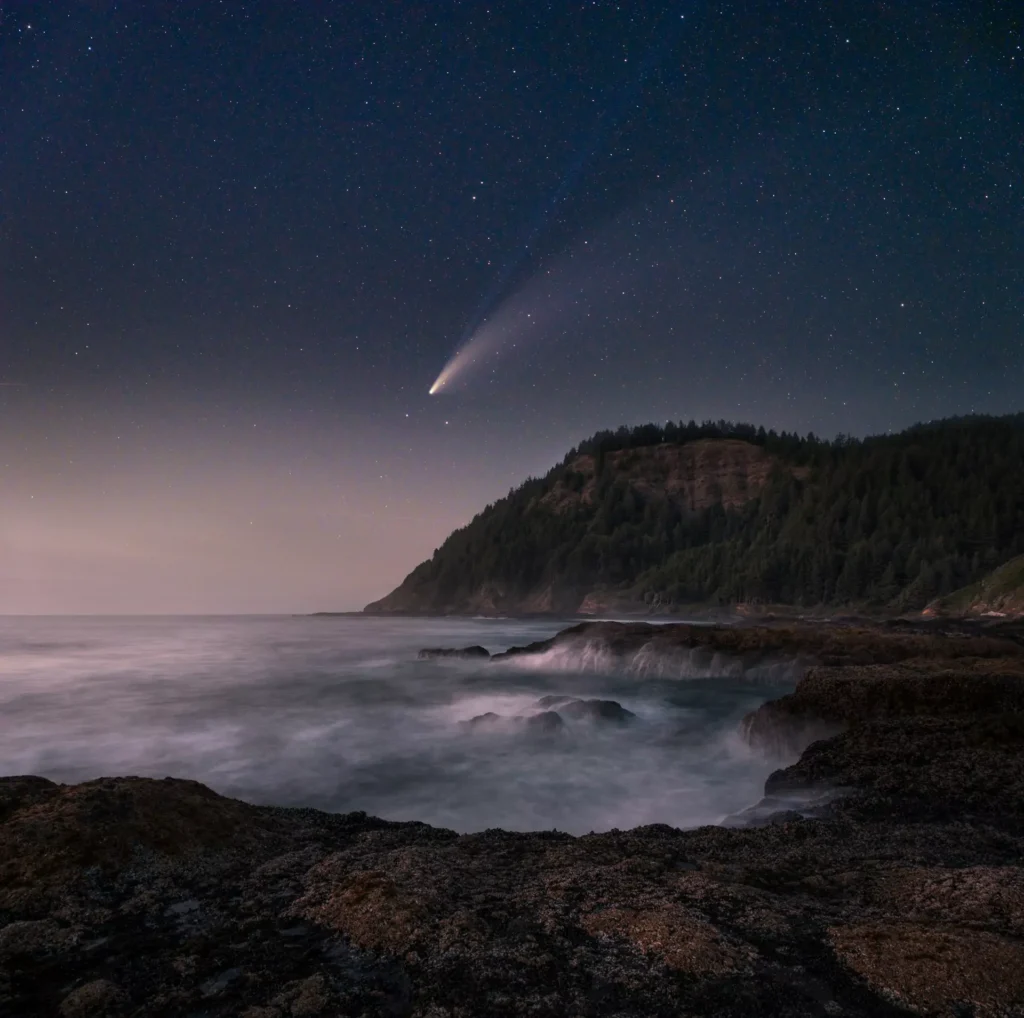
A Once-in-a-Lifetime Encounter: Capturing the Mother of Dragons (continued)
For those who manage to spot the Mother of Dragons, the natural next step is to capture its celestial beauty. While astrophotography can be a complex endeavor, even basic equipment can help you immortalize this fleeting visitor. Here’s what you’ll need and how to get started:
Equipment Essentials
- Camera: A DSLR camera with a manual shooting mode is ideal. Even some advanced smartphones can capture decent astrophotography results.
- Tripod: A sturdy tripod is absolutely essential for capturing sharp images during long exposures.
- Remote Shutter Release: This eliminates camera shake caused by pressing the shutter button directly.
- Wide-Angle Lens: A wide-angle lens will allow you to capture the entire comet, along with some of the surrounding starscape.
Capture Techniques
- Focus on Infinity: Set your camera lens to manual focus and adjust the focus ring until distant stars appear sharp.
- Long Exposures: Experiment with exposure times ranging from 30 seconds to several minutes. Longer exposures will capture fainter details of the comet, but require a stable tripod to avoid blurry images.
- Low ISO: Use the lowest possible ISO setting on your camera to minimize image noise, especially during long exposures.
- Aperture: A wider aperture (lower f-number) will allow more light to reach the sensor, beneficial for capturing fainter celestial objects.
- Stacking: Taking multiple exposures of the comet and stacking them using image processing software can significantly improve image quality and reduce noise.
Online Resources
- Astrophotography Forums: Online communities like “https://www.cloudynights.com/topic/549926-smartphone-astrophotography/” and “https://www.reddit.com/r/astrophotography/” offer a wealth of information and guidance for beginner and experienced astrophotographers alike.
- Astrophotography Tutorials: Numerous websites and Youtube channels offer tutorials dedicated to astrophotography techniques and equipment recommendations.
- Mobile Apps: Several mobile apps can help you locate the Mother of Dragons in the night sky, including “https://play.google.com/store/apps/details?id=com.google.android.stardroid&hl=en&gl=US” and “https://stellarium-labs.com/stellarium-mobile-plus/“.
Beyond the Image
Capturing the Mother of Dragons is just the beginning. Consider documenting your experience! Write down your observations of the comet’s appearance, share your photos and experiences online with other astrophotography enthusiasts, or even create a short video showcasing your journey to capture this celestial wonder.
Remember, the true magic lies not just in the image itself, but in the story behind it.
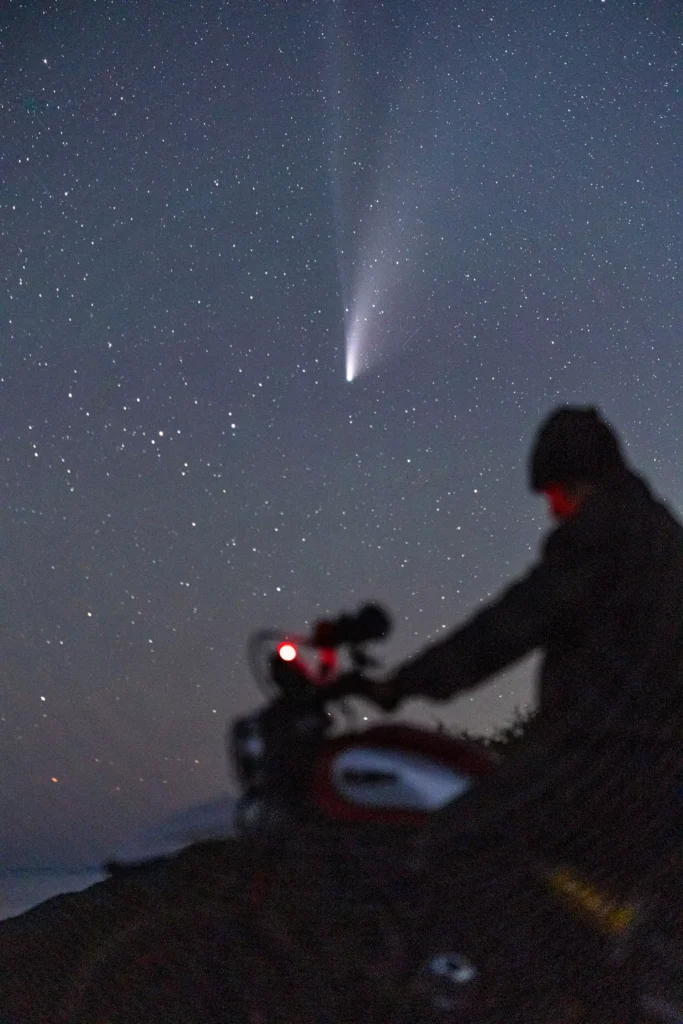
Farewell, Mother of Dragons: A Legacy Engraved in the Stars [Comet 12P/Pons-Brooks Trajectory, Future Visibility, Space Exploration]
The Mother of Dragons may soon fade from our view, but its fiery presence will leave a lasting impression. As Comet 12P/Pons-Brooks continues its journey through the solar system, it’s estimated to take another 71 years before it graces our skies once more.
The Future of Cometary Exploration
While witnessing the Mother of Dragons with our own eyes may be a rare opportunity, space exploration offers exciting possibilities for future encounters. Space probes like Rosetta, which orbited Comet 67P/Churyumov–Gerasimenko, have provided invaluable data on cometary composition and structure.
Future missions aim to explore comets in even greater detail, potentially paving the way for sample return missions that could unlock even more secrets about the origins of our solar system and the potential for life beyond Earth.
Conclusion: A Spark of Wonder Ignited
The arrival of the Mother of Dragons has served as a powerful reminder of the vastness and wonder of the universe that surrounds us. It’s a celestial spectacle that has sparked curiosity, ignited imaginations, and offered a glimpse into the building blocks of our solar system.
So, the next time you gaze upon the night sky, remember the fiery dance of the Mother of Dragons. It’s a testament to the ongoing celestial ballet that unfolds above us, a silent reminder of the mysteries that continue to wait to be unraveled.
Also Read:
- AMD Stock Slides After Earnings: A Deep Dive into the Data Center Outlook and Investor Sentiment

- Jeff Goldblum Skips Trust Funds: Raising Self-Made Kids or Risky Move?

- 10 Facts About “The Zone of Interest” – Unveiling the Monstrosity

- Student Loan Changes: PSLF Update, Repayment Restart & More (May 2024)

- Bay FC vs. Portland Thorns FC: Watch the NWSL Match Live (Stream & TV Guide)

Popular Categories: